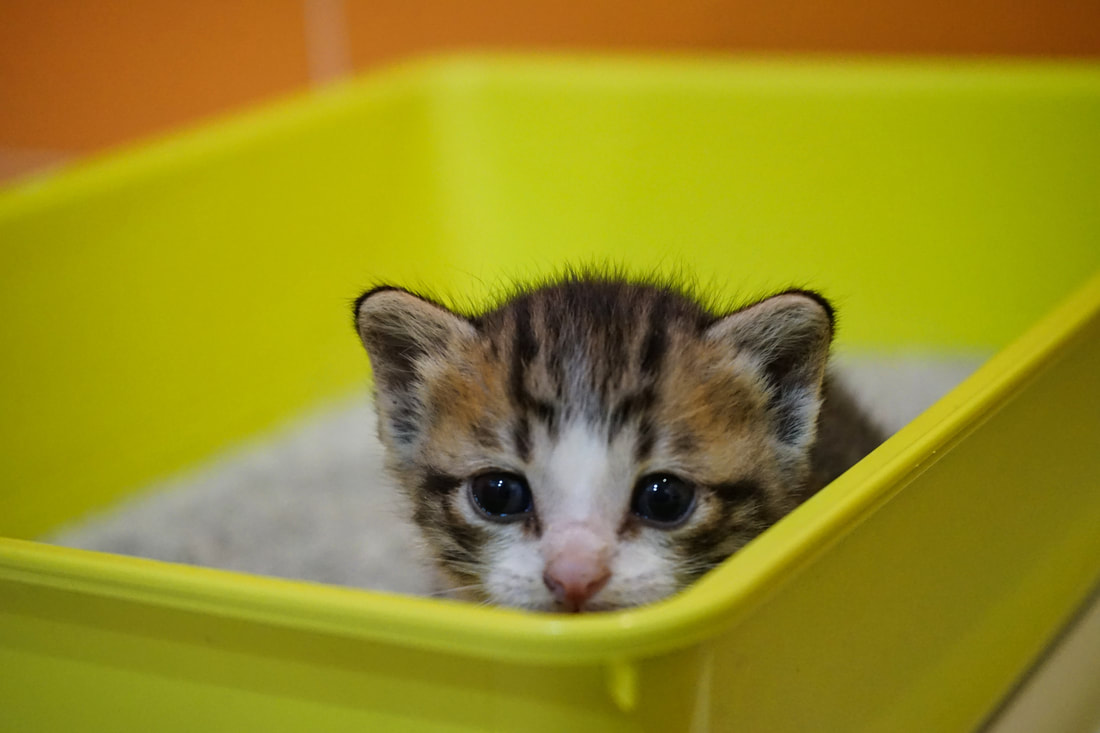|
The Invention of Cat Litter
What great event happened between the Great Depression and WW2? The invention of kitty litter! Before 1947, cats were using ashes, paper and even plain old dirt in boxes. At this time, most cats were still not considered house pets and remained outdoors. However, this began to change around the 1940s. Luckily for kitties, in 1947 a businessman named Ed Lowe and his neighbor, Mrs. Draper, were about to change the cat bathroom experience forever. One day, when Mrs. Draper asked for Lowe’s assistance with regard to the cat box he offered some absorbent clay. Lightbulb moment! She loved it. Soon, Lowe marketed his new invention and changed history with his Tidy Cat brand. Thank You, Mr. Lowe! Cat litter remained the classic non-clumping litter style for decades. Fast forward to the invention of scoopable clumping cat litter in the 1980s and the face of the cat litter industry changed for us all. Thomas Nelsen, an inventor, discovered that drying the clay caused it to clump. And thus, another main type of litter was born: the infamous clumping litter. Since Nelsen’s big innovation, the cat litter industry has become more competitive and saturated. Now, many brands are focusing on the newest goal of the millennium: environmental friendliness. There are now many options for eco-friendly litters. Which Kind is Right for You? Cat litter brands have a lot of varieties today, so it's good to know about all of the offerings. Read on to find out about some of the major types of cat litter. Traditional Absorbent Non-Clumping Clay Litter The dried clay has larger pieces that track less than small materials like sand, so it won’t stick to paws as easily and falls away in the box. However, it still tracks a bit and can make a mess. This litter is baked, which helps reduce odor, but it needs to be changed more often. This oldie but goodie can last for up to a week in a box (for one cat) before having to be dumped and completely changed out. Clumping Clay Litter Clumping clay litter can last a little longer, since you can scoop out the solid waste. Most brands recommend changing the litter fully every 2-3 weeks. This is now the gold standard for cats and litter boxes around the world! Environmentally Conscious Litters Many of these newer litters boast several attractive qualities, including being biodegradable and sustainable. Other than these plusses, many of these can also be flushed down the toilet if need be. It’s still recommended to toss the waste in the trash bin as with any other litter.
One of my personal favorites – and I have used it for years – is the paper-based formula. It is made of recycled paper, and I find the no dust feature is a huge plus. As with the above wood litter, it is absorbent but doesn’t clump. I never found there to be an odor issue but for others, they may feel it lacks the odor control they desire. The only drawback to my favorite here is the price. It is much more expensive than the classic clay litter. The texture reminds me of rabbit food pellets and didn’t bother my cat but stepping on one of these in bare feet was a reminder to sweep the floor. This is a great option also if your cat needs to have surgery and needs a larger granule and not a fine texture. Lastly, you could use soil but then every plant you have may become a toilet so be prepared for a surprise in your ficus tree pot! How to Pick the Best Litter for You To pick the best litter, first consider several factors including number of cats, amount of dust, desired odor control, how often you want to change the litter, how much you want to spend, and how important eco-friendliness is to you. For example, ff you have multiple cats, then odor and frequency of changing the litter are going to be high on your list of concerns. Keep in mind that scented litter isn’t always better since some cats simply do not like the artificially added odor and can leave little messages around to ‘tell’ you to turn off the extra odor! Quick Fact: Studies have shown that outdoor cats are most likely to cover their waste in the litter box. Indoor cats often lose this adaptation over time because they don’t feel threatened. If you have an outdoor cat (or a particularly instinctual indoor one!) consider using a low-dust formula. Many companies have studied and tested cats and their litter preference. The preferred litter style is the unscented clumping cat litter. Try out a few and ask your vet, your local pet store and friends what they recommend. You will know quickly if kitty does not like your purchase! Remember, this is as personal to your feline as your toilet paper is to you so give it some thought and hopefully we will never have a cat litter shortage.
0 Comments
Leave a Reply. |
AuthorWhen Cari has some free time from all the kitties, she likes to share her knowledge of all things cat in this bi-monthly blog. Enjoy the read! Archives
June 2024
Categories |


 RSS Feed
RSS Feed